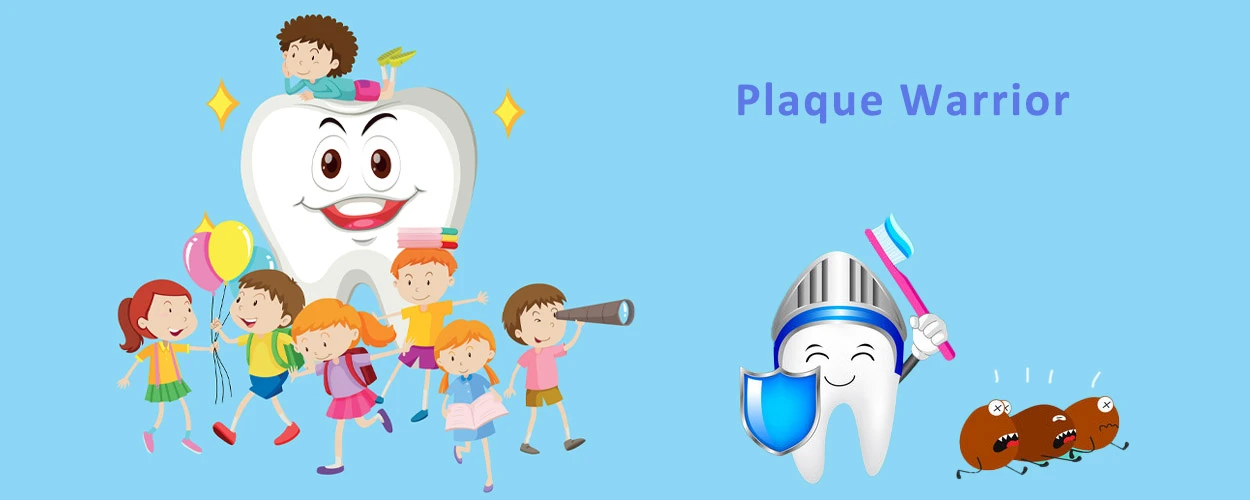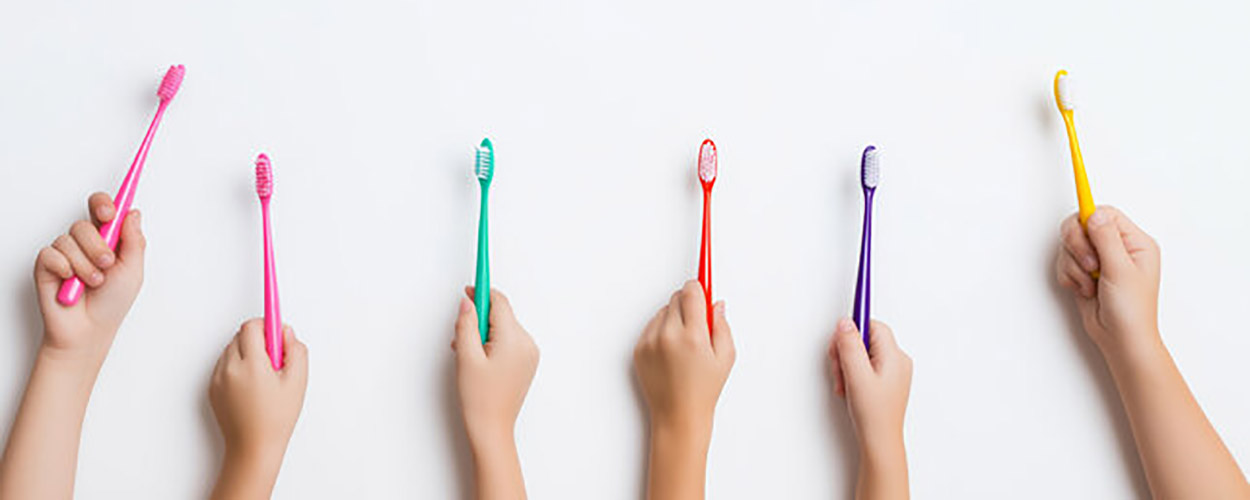La salute orale costituisce un determinante biologico critico dello sviluppo sistemico pediatrico. CHI I dati indicano 514 milioni di bambini in tutto il mondo presenti con carie non trattata nella dentatura primaria. Carie della prima infanzia (ECC) rappresenta la malattia cronica più diffusa tra i bambini di età inferiore a sei anni. Dietro questo, Riflette i genitori’ incomprensione cognitiva e mancanza di metodi nell'educazione orale. In questo articolo, Un dentista pediatrico che pratichi da più di dieci anni riassume le strategie di formazione professionale e pratica per aiutare i genitori a costruire un sistema di abitudini di salute orale che andrà a beneficio dei propri figli per tutta la vita.
1. Nutritional intervention during pregnancy: Strengthening the innate Foundation of oral health
Tooth germs start to form from the 6th week of the fetal period. The intake of calcium, phosphorus and vitamin D during pregnancy directly affects the development of tooth enamel. It is recommended that pregnant women supplement 1000mg of calcium daily (equivalent to 500ml of milk +50g of cheese) and increase their sources of vitamin D (such as deep-sea fish and egg yolks can be consumed). Clinical studies have confirmed that the vitamin D level of mothers during pregnancy is significantly negatively correlated with the incidence of dental caries in their children at the age of 6 (P<0.05).
2. 0-1 anno: Key guidance for oral tactile sensitivity period
After a baby is born, gum massage is necessary. Use a silicone finger brush to gently clean it in the morning and evening every day. When the baby teeth at 6 months of age come in, it is recommended to use the “three-zone cleaning method” : divide the oral cavity into the left buccal area, the right buccal area and the tongue surface area. Use a 45-degree Angle brush to touch the gum line and gently brush each area for 10 Secondi. The focus at this stage is not on removing food residues, but on establishing neural reflex associations.
3. Cross-sensory training: tactile and gustatory joint development
- Tattile: Use silicone ALIGNER CHEWIE of different textures (protrusions/stripes/waves) to stimulate gum development
- Gustatorio: Introduce naturally bitter foods (broccoli/cavolo) dopo l'età di 2 to reduce dependence on sweet foods
- Visivo: Observe the distribution of dental plaque using an ultraviolet irradiation instrument
Incoraggia la masticazione di esplorazione e consapevolezza della placca attraverso giochi di ruolo come “Plaque Warrior” durante la spazzolatura. NOI. La ricerca comportamentale pediatrica indica le routine gamificate migliorano la conformità 73%.

4. Tool science: Tools determine the quality of habit formation
Evoluzione dello spazzolino da denti: Use silicone material before the age of 1, switch to super soft bristles and cartoon design from 2 A 4 anni, and only use electric toothbrushes after the age of 5.
Toothpaste advanced method : Use fluoride-free gel in the early stage of tooth eruption. After the age of 2, transition to children’s toothpaste containing 500ppm of sodium fluoride (the dosage should be controlled to the size of a grain of rice).

5. Orologio dietetico: Establishing biological rhythmic protection
Formulate the “322” dietary rules:
- 3-hour interval : there should be at least a 3-hour interval between main meals and snacks to ensure that saliva fully neutralizes the acidic environment
- 2 types of foods to avoid : Cibi appiccicosi (gummy candies, preserved fruits) and long-lasting sugary foods (lecca -lecca, bevande zuccherate) should be eaten sparingly or avoided altogether
- 2 essential items : At the end of each meal, you can have “refreshing foods” such as apple chunks and celery strips, ensuring a daily intake of 200g of high-fiber ingredients
Quando masticano le mele, the fibers rub against the surface of the teeth, which can remove dental plaque and food debris . Experiments show that continuous chewing of apples can reduce dental plaque coverage by 15%-20%. Crude fiber forms a “broom effect” during chewing, cleaning the residues between teeth and on the occlusal surface . The physical friction effect of celery fiber can reduce the risk of interproximal caries. Un totale di 20 minutes of chewing exercise daily can increase the width of children ‘s dental arches (the Pont index increases by 0.2-0.5) . Dietary fiber adsorbs cariogenic sugars, reducing the time free sugars come into contact with the tooth surface.
6. Incentivo positivo: Application of reward Mechanism
Create the “Teeth Defense Battle” points table: Brush your teeth in the morning and evening to earn 1 star each, and use dental floss correctly to earn an additional star. Accumulate 10 stars to redeem rewards such as toys and bedtime stories. Neurological research has confirmed that the dopamine reward mechanism can increase the efficiency of habit formation by 40%.

7. Fine management during the transition period: Special attention to during the tooth replacement stage
Ⅰ. Treatment of loose teeth during the tooth replacement period
Gently shaking 10 times a day can accelerate osteoclast activity through mechanical stimulation and promote physiological resorption of the tooth root . Experimental data show that regular shaking can shorten the cycle of deciduous tooth loss by 3 A 5 days . La pressione moderata può attivare l'attività degli osteoblasti nell'osso alveolare, creating a better bone guidance space for the eruption of permanent teeth.
Ⅱ. Permanent tooth eruption period
Usa chewies allineatori di silicone per alleviare il disagio della gomma. The elastic modulus of silicone material (0.5-1.5MPA) can precisely disperse the pressure on the gums and relieve swelling and pain during the eruption period . Thermal imaging detection showed that local blood flow increased by 35% after use. The wavy surface design of the gum can enhance the coordination of the masticatory muscle group and prevent asymmetry in the development of the dental arch caused by unilateral chewing . The hydrophobic property of food-grade silicone can reduce the adhesion of food residues and lower the incidence of gingivitis during the eruption period . Plaque tests show that the interproximal plaque index decreased by 23% after use.
Ⅲ. Establish a “Tooth Growth Diary” : Record the time/Angle/color of eruption
8. Eliminazione della paura: Desensibilizzazione agli scenari medici
Dall'età di 3, I bambini vengono regolarmente portati per osservare i loro genitori’ processo di pulizia dentale, in modo da eliminare la loro paura dell'ignoto in relazione all'esame dentale e al trattamento. La pratica clinica ha dimostrato che i bambini che hanno più di 6 Le visite dentali in anticipo hanno 58% Più cooperazione con il trattamento.

9. Controlli "periodici": Visite regolari al dentista
Una volta che la paura di tuo figlio ai controlli dentali è stata eliminata, Puoi visitare il dentista con tuo figlio su base regolare. Si raccomanda che il bambino visiti il dentista ogni sei mesi a un anno per un esame orale e una pulizia. I dentisti possono rilevare prontamente i problemi nella bocca del bambino, come la carie dentale, Soprattutto il rilevamento precoce di problemi come antin-mandibolare, copertura profonda, ecc. L'età di 4-6 anni è il periodo d'oro per il trattamento ortodontico funzionale.

10. Genitori’ Aggiornamento cognitivo: per eliminare 5 Importanti idee sbagliate di buon senso
| Prima o poi i denti devono essere sostituiti | I denti primpiari decaduti porteranno a uno sviluppo anormale di germi dentali permanenti |
| No fluoride is safer | La quantità moderata di fluoro può ridurre il rischio di carie dentali 25 percentuale |
| Spazzolare forte è l'unico modo per pulire | La spazzolatura eccessiva porterà ad un aumento dell'incidenza di difetti a forma di cuneo |
| Il filo interdentale è dannoso per le gengive | L'uso corretto può rimuovere 40% di targa adiacente |
| La consultazione è necessaria solo se hai mal di denti | Applicazione di fluoro professionale ogni 3 i mesi sono più efficaci del trattamento |
Conclusione
La gestione della salute orale dei bambini moderni è entrata nell'era della "prevenzione di precisione", che richiede ai genitori di padroneggiare le tecniche di intervento multidimensionale di bio-psico-sociale. La salute orale è una parte importante della salute generale. Coltivare buone abitudini di salute orale nei bambini fin dalla tenera età non è solo un modo per consentire ai bambini di avere un boccone di denti sani e belli, ma anche un modo per proteggere i loro sorrisi luminosi per i decenni a venire.


